In the first part of this article, which you can find here, we discussed the timeline of my hen Angélique's depigmentation with photographs and commentary, after which I shared some of the reasons why this phenomenon can occur. I'm now going to look into more detail at each of these catalysts and then I will look at the specific named conditions that have been used for depigmentation. Firstly, I'm going to dip into the genetics that have shaped Angélique and Elvira and see how these may have bearing upon their situation. In keeping with perceived wisdom on this condition and I must say in line with my own beliefs, I'm looking at dual or multiple triggers rather than just a simple, single cause.
Genetics & Stress - The Bloodlines of the Forest Garden Flock - Possible Clues to Depigmentation.
As our hens and cockerels freely inhabit 1000m² of forest garden, it has often been difficult to trace the exact parentage of each chick and my best guesses are formulated around permutations of plumage, crests, beaks and feet. Over the years
however, as the forest has bloomed, so have our poultry, becoming in
behaviour, more like their wild Jungle Fowl cousins. In matters
of courtship and parenting they often chose their partners for life and by repetition of appearance and comportment it is now much easier to trace the bloodlines back to their
original sources.

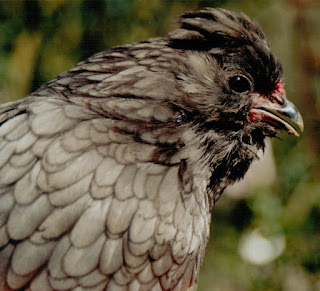
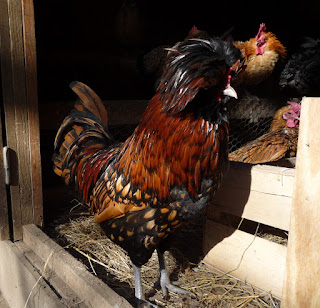
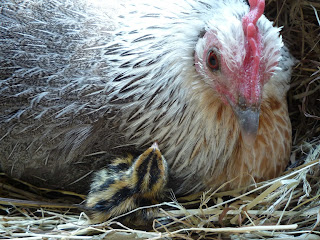 My first cockerels were the Golden Sebright (Orlando above left with
Dorabella and Mouse) and the Silver Duckwing Ardenner (Raffles above) These two were swiftly followed by the Golden Black-Laced Polish with Rupert, second generation, left and below left. I also
added many varieties of rare breed/heritage hens such as Mantes, Brahma,
Barbu de Watermael (Gabriella below left), Ancona, Lakenvelder, Marans..... However, it is important to understand that every bird in this
garden is an individual and they each have their own personality traits
and sensitivities. There is no such thing in my mind as a definitive
tract for how 'chickens' behave, all I can hope to do is watch and learn. There are however certain behaviours and styles which are to my mind synonymous with certain breeds. for example, If
I think of Sebrights I immediately see that elegant shape with the
wings held low and the head high, the typical English game bird of the early 19th century European painters. The only clue we have to the Sebright's provenance is that
it was bred partly from a fighting cock Sir John is said to have
purchased from a Norfolk fair. This in itself, for me would explain the stance of both the male and female, their heads held high, wings worn low and tail hoisted like a ship's colours, ever ready for battle. For the same reason Sebrights are to my mind highly strung birds and very sensitive to change. I have had several cases of panic attacks with Sebrights over the years which have manifested themselves in partial paralysis which with nutritional treatment has passed off within 24 hours.
My first cockerels were the Golden Sebright (Orlando above left with
Dorabella and Mouse) and the Silver Duckwing Ardenner (Raffles above) These two were swiftly followed by the Golden Black-Laced Polish with Rupert, second generation, left and below left. I also
added many varieties of rare breed/heritage hens such as Mantes, Brahma,
Barbu de Watermael (Gabriella below left), Ancona, Lakenvelder, Marans..... However, it is important to understand that every bird in this
garden is an individual and they each have their own personality traits
and sensitivities. There is no such thing in my mind as a definitive
tract for how 'chickens' behave, all I can hope to do is watch and learn. There are however certain behaviours and styles which are to my mind synonymous with certain breeds. for example, If
I think of Sebrights I immediately see that elegant shape with the
wings held low and the head high, the typical English game bird of the early 19th century European painters. The only clue we have to the Sebright's provenance is that
it was bred partly from a fighting cock Sir John is said to have
purchased from a Norfolk fair. This in itself, for me would explain the stance of both the male and female, their heads held high, wings worn low and tail hoisted like a ship's colours, ever ready for battle. For the same reason Sebrights are to my mind highly strung birds and very sensitive to change. I have had several cases of panic attacks with Sebrights over the years which have manifested themselves in partial paralysis which with nutritional treatment has passed off within 24 hours.
Similarly with the Polish crested, whose limited vision, although it does not in any way affect my Polish's ability to forage, does cause them to be wary of those approaching from behind. This can lead to a certain nervousness of disposition. In my observation, Polish birds are also sensitive to emotional stress, in particular having strong family ties. I have seen my birds play jokes upon each other and get the nearest to what I would call Gallinaceous laughter and I have witnessed one of my original elderly Golden Polish give up the will to live after both his brothers predeceased him.
Ardenners too, in my experience have strong family bonds, they are an ancient breed, developed it was thought by the Romans, who were fascinated by five-toed poultry, which the Ardenners originally were. It was from them that the five-toed UK breed the Dorking was developed. My Ardenners have exhibited volatile temperaments, which is why I chose them for raising quail as being easily affected by change they are happily equally quick to find solutions.
So where does all this get us? Well here, to Vladimir (second from right above), who I believe is the male version of the bloodlines that make up Angélique and Elvira. In him we can distinctly see the Sebright rose comb and stance, the Polish Crest and the Ardenner bare face. The above image was taken on the 5th of September 2011 and the one on the left on the 11th February, 2012. Vladimir was very highly strung and as a young bird was once unable to walk or feed himself for three days after a scuffle with another cockerel. He had no obvious physical injuries, everything was internalised stress. Looking back, I can now no longer be surprised when this happened, as witness this image taken 26th November 2013. However, with Vladimir it remained at the level of predominant depigmentation.
Ardenners too, in my experience have strong family bonds, they are an ancient breed, developed it was thought by the Romans, who were fascinated by five-toed poultry, which the Ardenners originally were. It was from them that the five-toed UK breed the Dorking was developed. My Ardenners have exhibited volatile temperaments, which is why I chose them for raising quail as being easily affected by change they are happily equally quick to find solutions.
So where does all this get us? Well here, to Vladimir (second from right above), who I believe is the male version of the bloodlines that make up Angélique and Elvira. In him we can distinctly see the Sebright rose comb and stance, the Polish Crest and the Ardenner bare face. The above image was taken on the 5th of September 2011 and the one on the left on the 11th February, 2012. Vladimir was very highly strung and as a young bird was once unable to walk or feed himself for three days after a scuffle with another cockerel. He had no obvious physical injuries, everything was internalised stress. Looking back, I can now no longer be surprised when this happened, as witness this image taken 26th November 2013. However, with Vladimir it remained at the level of predominant depigmentation.
So lets dig deeper into our bloodlines and take a look at some other potential multiple causes of depigmentation.
Genetic Predisposition, Health Issues, Sunlight, Age, Trauma & Nutrition
As I've sifted through the literature and compared the behaviour and characteristics of my birds, I've come to the conclusion that the reasons for depigmentation are due to multiple triggers. For example, I can not separate genetics from potential nutritional deficiency because of the way certain mutations may block assimilation. I have however, dealt with environment and toxins in a separate paragraph because I think that although genetics will certainly play a part in toxicity, the way chemicals trigger depigmentation is important of itself.
As we have previously discussed in my first article, moulting and even aging can cause patches of white feathers to occur. Here we can see on one of my golden Polish bloodlines evidence of partial depigmentation in my Golden Polish's Mallen Streak. Bungle (above), who although belligerent by nature always seems to manage to get her own way, is little affected by stress. Like all my Polish she is an excellent forager and omnivore and thus eats incredibly well, however she has recurrent scaly leg, which suggests rather an inability to absorb beta carotene and/or a problem with zinc levels. This latter element has a specific role in the metabolism of Vitamin A. She is certainly neither by inclination nor opportunity short of occasions on which to synthesise Vitamin D. However there is that link (discussed in my article on the subject) between scaly leg, Vitamin A and the functioning of the uropygial (preen) gland and thus the pathway by which the vitamin D3 precursor; 7-dehydrocholesterol; is assimilated into the bird. Her sons, Rupert and Spike (above left) both forage and eat well and are sun worshippers but they are a great deal more nervous in personality than their mother. They too on various occasions have shown slight infestations of scaly leg. In the photo taken in 2012 you can observe a large patch of depigmented feathers in Rupert's crest, whereas it is not until a few years later in 2015 that this shows up in Spike.
It is certain to me that despite perhaps a problem with certain nutritional pathways that all three of these birds are healthy. However they obviously carry a gene that predisposes them to partial depigmentation. It also seems evident to me that this is also age related as my Polish did not have these white patches in their youth.
With regards to depigmentation triggered by trauma, it is true of some of my Polish that they allow other hens to pull at their crest feathers, in particular when new feathers are emerging. The sheaths that surround and protect the new feathers are highly proteinaceous being made of pure keratin and I am guessing highly itchy. This crest pecking therefore may in some ways be symbiotic. However, I have never witnessed any hen or cockerel feather pecking the crests of these three.
 |
| Getting some Rays - Bungle and Prof Hermann helping me to garden! |
Environment & Toxins
There are some very interesting studies into depigmentation and environmental and chemical causes. One of the most famous cases was that of a group of leather and tannery workers in 1939, 50% of whom developed patches of depigmentation on the skin of the hands and arms. Ironically this was traced to a chemical used in manufacturing of protective rubber gloves and was identified as monobenzyl ether of hydroquinone (MBEH). Its action is to cause the death of melanocytes, the cells responsible for the creation of melanin. Another important chemical, again a member of the phenol family that cause depigmentation, is 4-Tertiary butylphenol (formaldehyde resin), this is found in a variety of everyday products, from hair dyes and air fresheners, to adhesives, cleaning agents, antiseptics and glues. The common feature of these and other phenols which cause depigmentation is that they share a common chemical structure with the amino acid L-tyrosine, the base from which the body makes melanin. Thus the phenol mimics the amino acid and is drawn into the melanocytes. When considering poultry therefore and how this might impact on them we might think of the glues used in coops, particularly if particle boards are used and also the phenol once wildly used for painting everything in the garden that didn't move; creosote.We should also consider that chemicals can last in soils and structures for decades, even longer and that recent research tells us that they can similarly reside within the DNA and be transferred through generations. Thus it is not the garden we have now that may impact upon our birds but what was there before nor it is the bird we have now but its ancestors' exposure to toxins that may be in question.
Canary in the Coal Mine
Going back to my idea of the bird as an individual, I would also like once again to highlight the complexity of genetics and how one bird's response to chemicals, stress, sunlight, trauma etc., may not be the same as another's. One thing is certain, there is still a lot to learn but the elimination of as many of these factors as possible from your birds surroundings including it has already been speculated, gluten, would be a good idea if you are beginning to observe depigmentation in your flock.
 So What's With Angélique?
So What's With Angélique?
Having read around the subject and wrestled with genetics for days until my head is spinning. I still have to admit that I am not convinced that this isn't just one condition but with a genetic predisposition and multiple interdependent triggers. Having interchangeable nomenclature in different articles doesn't help! I have however, come up with the following potential conditions for Angélique:Leucism
This
is caused by a reduction of pigment. As with all things genetic there
is controversy and disagreements but in general the consensus seems that
this is a genetic condition which can occur in several stages; partial,
predominant or total leucism. it also seem to be something that comes
on all at once or is progressive. It may also skip generations and in
partial leucism it may also change expression, thus a parent may have
white feathers in the tail and a chick may develop similar but in the
crest or wing. Leucism usually doesn't affect the beak and nails but it
can. For this reason it is sometimes incorrectly referred to as 'partial
albinism' and there is an article I'll link to below which explains
very succinctly the reasons for this. Leucism has been observed in wild birds, particularly but not exclusively in the dark (melanin pigmented) wild birds in industrial cities, so there is a potential chemical element, air, water, food contamination to be considered.
Above Left: an example of wild bird leucism is the Red Tailed Hawk pictured this October in the Deluth News Tribune courtesy of their Pinterest Board
Vitiligo
Vitiligo can be classed as an autoimmune disease of the skin in which the melanin producing melanocytes are attacked and destroyed. Thus patches of white begin to appear, where the cell death has occurred and where melanin has been lost or can no longer be produced. Vitaligo also can affect, hair and feathers and has been engineered in poultry. As with leucism there are various manifestations, from patches to 'universal' or complete. Similarly it can happen quickly or there is a slow progression and vitiligo can be triggered by dyes, glues and in particular, as discussed above those chemical phenols, which mimic the natural phenol, the amino acid L-tyrosine. Research into the progression of the disease indicates that those with vitiligo show an inherited inability to manage the stress caused by everyday cellular processes and/or exposure to environmental toxins. Interestingly vitiligo is documented as sometimes causing depigmentation on just one side of the body as witnessed above in the Pinterest pin of this peacock, unfortunately I have not found the original but you will find it variously displayed on the net, described as leucistic and bizarrely as 'half albino'. Again, all this research carries with it a certain amount of controversy and contradiction because the exact initial reasons for vitiligo are still largely unknown. As with leucism, although vitiligo can occur in members of the same family, its expression is not always the same, for example in identical twins, if one twin has it the other has less than 25% chance of also having vitiligo. Thus as with leucism their are multiple factors involved, including all of those mentioned above.
In Conclusion
Thanks for dropping by and do feel free to share experiences or ask for further information in the comment section. If you have enjoyed this piece and found it useful think about sharing it with your family and friends, on social media and also maybe about joining this blog and/or subscribing to my Youtube channel or even supporting us on Patreon or
Until next time, all the very best from Normandie! Sue
© 2018 Sue Cross
RELATED ARTICLES
 The Strange Case of the Fading Hen
The Strange Case of the Fading Hen
Before we went away back to Scotland in June of this year, I noticed
that one of my hens, Angélique, had dramatic pigment loss to her
feathers. Although since 2017 this had been an on-going process...read more
Further reading: Not Every Bird is an Albino Sense and Nonsense About Colour Aberrations in Birds
Further reading: Not Every Bird is an Albino Sense and Nonsense About Colour Aberrations in Birds

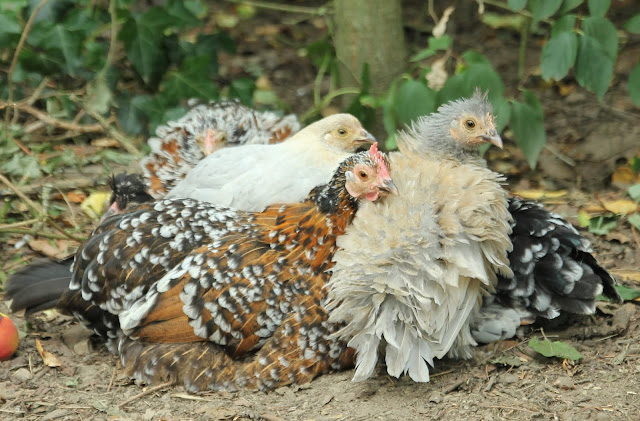
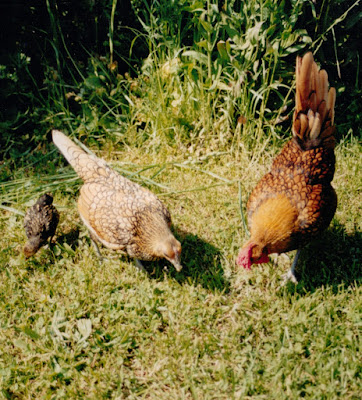




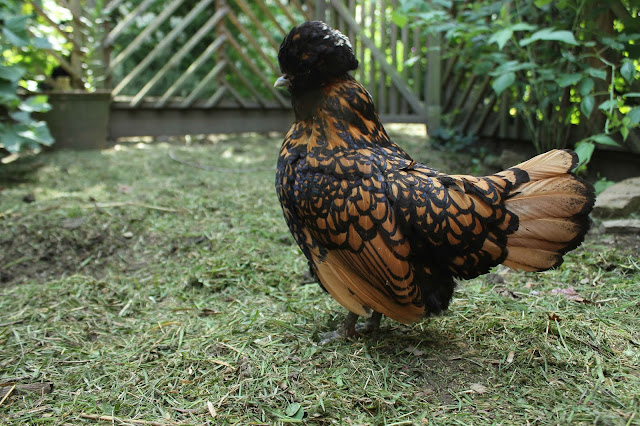


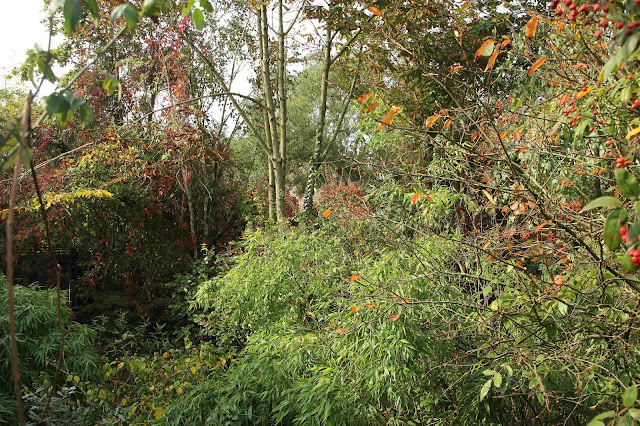





No comments:
Post a Comment